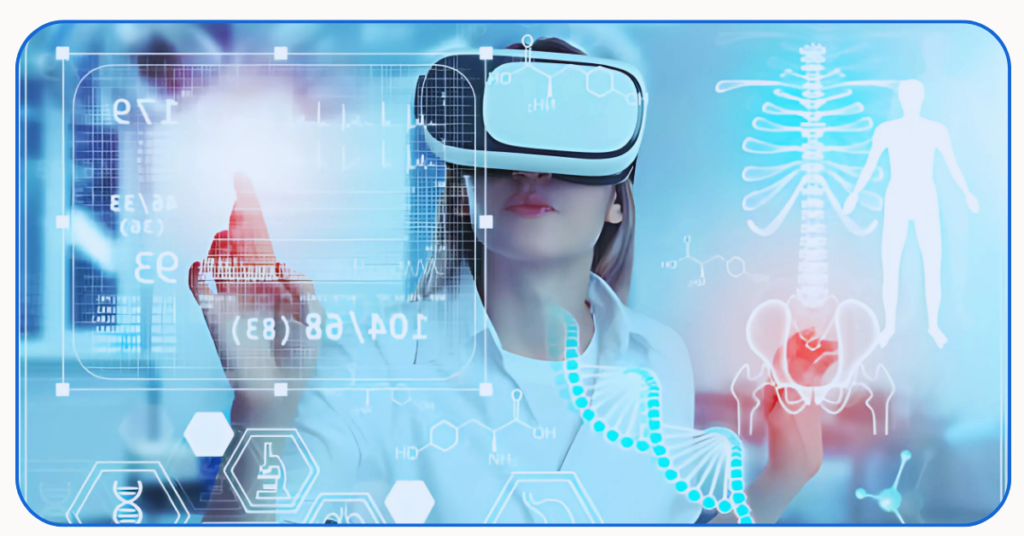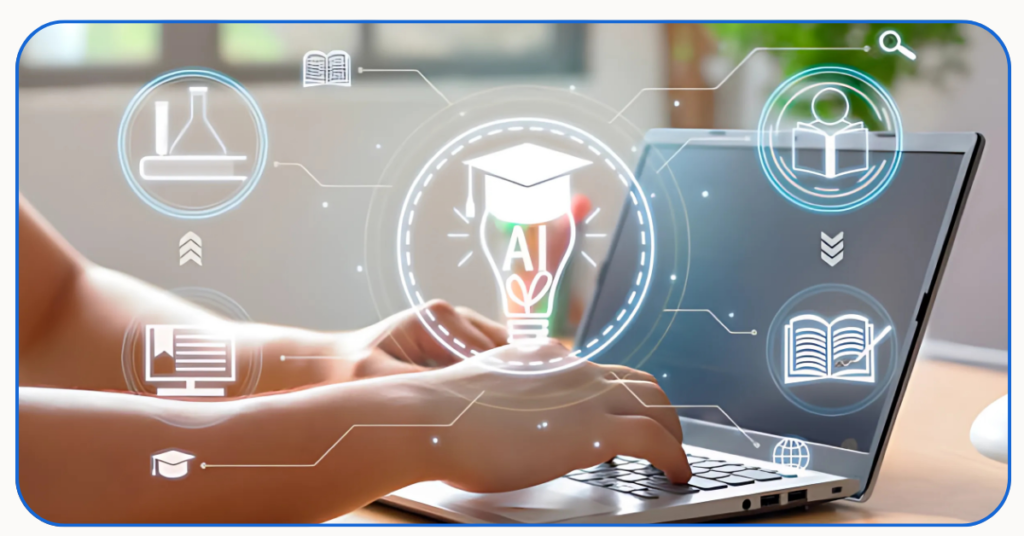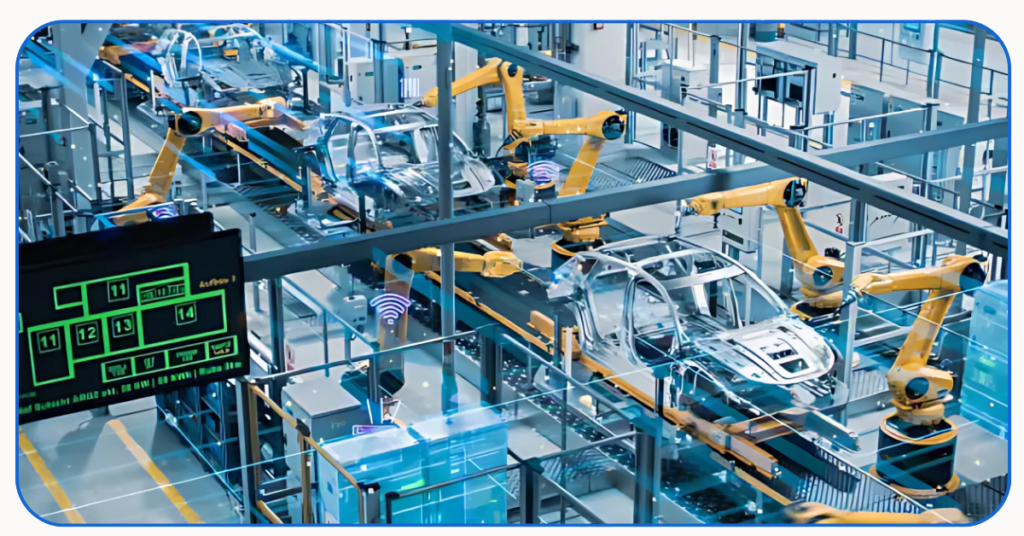Artificial Intelligence has developed at a faster pace. With the increasing popularity of AI technology, it has been integrated into numerous tools used in several industries. The AI integration within tools is making work easier while offering wonderful possibilities.
Through machine learning, natural language processing, and analytics, AI-based technologies are helping people to make better work decisions. They free them from tedious tasks and enable them to concentrate on creative work.
In this blog, we’ll discuss various sectors where AI integration within tools has enhanced performances and redesigned how we work.
What is AI integration within Tools?

AI integration in tools means the combination of Artificial Intelligence technologies with systems and platforms in software applications. This integration makes the tools self-driven. They automatically work, predict, and offer crucial information for user convenience. Integrated AI tools in the software can eliminate all repetitive work. They process all the data received and generate recommendations for further action themselves.
When AI is integrated within applications the system learns from interaction and assesses user behavior. It ensures that the application evolves with time by identifying and fixing errors independently.
Integration of Artificial Intelligence in Different Industries
Using AI integration within tools, organizations stay innovative and ahead of competitors. AI-integrated tools are used in various sectors to reduce costs and enhance work capabilities. Here are some of these
Digital Marketing: Using AI for Online Success

Integrating Artificial intelligence into digital marketing tools helps marketers work smart and fast. AI-driven tools aid marketers in optimizing and analyzing marketing campaigns. These tools can predict future trends by analyzing the data. Hence, they assist in creating effective digital marketing plans for customers. These tools can perform every task from content creation to SEO and paid marketing. With the integration of chatbots, customers experience 24/7 customer support.
Here are some examples of AI Integrated Tools Used for Digital Marketing.
1. Jasper AI
Jasper AI is an AI-based tool for fast content generation. It creates engaging and customized articles, blogs, and social media posts, saving the user time and energy.
Features included in Jasper AI
- Generate high-quality content for articles, blog posts, and social media ads
- Translate content into multiple languages according to your need
- Optimize content for search engine optimization
- Ensure error-free content by spelling checking in written content
2. HubSpot
HubSpot offers marketing, sales, and customer services in one place. It helps businesses by providing features for website creation, blogging, customer relationship management, and lead generation. Thus, driving revenue growth and success for companies.
Features and Tools offered by HubSpot
- Automated and personalized Email creation and tracking
- Drag-and-drop website builder with customized templates
- AI-based chatbots for efficient customer support
- Scheduled and monitored social media management
Also Read: Top 35 AI Tools For Digital Marketing
Healthcare Sector: AI-Based Virtual Doctors

AI Integration within tools has transformed the healthcare industry. AI-driven medical image analysis tools can analyze patients’ CT scans and MRIs to detect irregularities. AI-based robots are used for body checkups. Artificial Intelligence helps doctors to make decisions based on data.
Below are examples of AI integration within tools in the healthcare industry.
3. Merative
Merative, formerly known as IBM Watson Health, is an AI-driven tool to analyze patients’ medical data. So, it helps doctors diagnose diseases quickly and accurately. Also, it aids in improving the decision-making process for medical professionals without interrupting their work.
Features of Merative AI integrated tool
- Offer personalized treatment options after analyzing the patient’s medical history and data
- Share data easily and can be integrated with other systems
- Mobile applications are available providing patients with customized portals
- Fewer healthcare costs with improved medical results
4. Viz.AI
Viz.AI is a leading AI-integrated tool used in the medical field. This tool mainly focuses on cardiology and neurology. It can analyze medical images and diagnose health-related issues in patients.
Features offered by Viz.AI
- AI algorithms to read CT scans, MRIs, and X-rays
- Timely inform healthcare professionals about potential diseases
- Provide information and recommendations regarding treatments
Education Sector: Make Learning Interesting with AI

AI-based education tools have changed the learning process for students. It has become more customized, effective, and interesting. These tools can adjust the lesson difficulty according to student’s needs and abilities. Students get one-on-one guidance from the virtual teaching assistants.
Here’s an example of AI-integrated tool widely used in the education sector.
5. Cram
Cram is an AI-based online learning platform that provides study materials to improve comprehension. Students can also customize their learning experiences. The platform can be accessed through various devices, such as mobiles and desktops.
Features included in Cram
- Offer small summaries of textbook chapters for several subjects
- Provide practice tests including chapter-based quizzes
- Offer access to e-books to study online
- Show flashcards for difficult terms used in chapters to make them easier for students
Manufacturing Sector: Working Hand-in-hand with Artificial Intelligence

Artificial Intelligence applications are enhancing the various operating systems in the manufacturing sector. These AI platforms increase product quality and lower manufacturing costs. AI software uses information collected by the equipment sensors and predicts if something goes wrong so maintenance can be planned.
Advanced AI applications function and check defects in real-time. Moreover, with integrated technologies manufacturing industry systems improve supply chain and inventory operations.
Here’s a famous tool based on artificial intelligence that is used in the manufacturing sector.
6. Bosch’s APAS
Bosch’s APAS assistant is an industrial robotic system that uses artificial intelligence. This system collaborates with human employees to enhance manufacturing efficiency and flexibility.
Features offered in APAS assistant
- Collaborate with humans for inspection and packaging in factories
- Detect defects in the manufactured items
- Monitor and optimize the production process
- Predict if maintenance is needed or not
Government Sector: AI-integrated Tools for Public

The adoption of AI in government sector tools is reforming the government’s interaction and functionality with the public. Several government utilities are becoming more efficient in public service delivery with the integration of artificial intelligence. The population gets reliable citizen support and information from such AI-driven chatbots.
Predictive analytics with the help of Artificial Intelligence shows the crime rates, traffic problematic areas, and infrastructural requirements in particular areas. AI captures the citizens’ responses while computer vision improves security and surveillance.
Below is an example of AI tool utilized in the government sector.
7. The Singapore Government’s Virtual Intelligent Chat Assistant (VICA)
VICA aims to provide citizens with easy access to government information and services.
Features included in VICA
- Import and compile several datasets
- Unified chatbot for agencies
- In specific conditions, switch cases to human operators from chatbots
- Integrate with other channels like WhatsApp and Telegram
Media and Entertainment: Empowering Content Creation with AI

AI has been introduced in many tools within the media and entertainment industry. Artificial Intelligence is changing the way content is generated and delivered to viewers. AI-based content recommendation systems make recommendations based on the obtained data from users.
Video editing with artificial intelligence involves several automated options including color correction options. AI extended music composing software to create new soundtracks.
AI-powered tools are available to translate audio to text and vice versa. Understanding AI opportunities, media and entertainment organizations may improve the content, production processes, and viewer interactions.
Spotify’s Discover Weekly is an AI tool that is frequently used by users for entertainment.
8. Spotify’s Discover Weekly
It is a music recommendation feature of Spotify that uses AI. it helps users create customized playlists using listening history and search query data.
Features Of Spotify’s Discover Weekly
- Update personalized playlists every Monday
- Introduce new and unreleased music tracks by new artists
- Continuously improve playlists based on user feedback
Agriculture Sector: Shaping Farming Using Artificial Intelligence

The agricultural sector is gradually experiencing AI integration within tools. These smart farming tools can optimize crop production, cut losses, and increase efficiency. Some of the AI-based farming applications assess information related to soil, climate, and crop health. AI-driven drones monitor crop development and identify diseases and pests in crop fields. In many areas, farmers spray pesticides on crops automatically through these drones. AI applications can predict the weather and humidity of the soil. Using AI assistance farmers can enhance their production, lower costs, and go green.
A prominent AI application used in the agriculture sector is as follows.
9. SoilMap: An AI Integrated Tool for Agriculture
SoilMap is an AI-based soil mapping tool. It provides detailed soil information and analysis. SoilMap also gives information regarding soil conditions for agriculture and infrastructure projects in a particular area.
Features of SoilMap
- Detailed soil mapping explaining soil type, texture, and composition
- Monitor moisture level, pH, and nutrients present in the soil
- Identify soil erosion-prone areas and evaluate the health of the soil
- Improve crop yields by optimizing soil management
Telecommunication Industry: Connecting Networks with AI

The deployment of Artificial Intelligence in Telecom applications enables efficient network management and customer service. These tools monitor traffic flow and network behavior to forecast and mitigate failures. They also help in predicting the need for equipment maintenance before failure.
With the analysis of the customers’ feedback, AI algorithms provide better security measures for the networks and related threats. AI presents intelligent virtual assistants for advanced customer service by presenting timely customized offers and service provisions.
Here’s an example of AI integration within tools in telecommunication.
10. Nokia NetGuard
Nokia NetGuard is a security tool driven by artificial intelligence. It is used to manage and protect telecommunication networks.
Features offered by Nokia NetGuard
- Recognize cyber security threats and reduce them in real-time
- Automatically respond to security incidents
- Provides enhanced 5G network performance and security to users
Transportation Industry: AI-based Tools for Better Journey

The utilization of Artificial Intelligence in the transportation industry has dramatically changed transportation tools. Various applications use AI to schedule maintenance services for vehicles before breakdown. Most self-driving services use artificial intelligence to help cars drive on complicated routes and reduce accidents.
GPS traffic management systems incorporate AI in traffic tracking and route direction. Moreover, people speak to these tools about real-time information and directions with AI-driven tools.
Waze is a known example of AI integration within tools in the transportation sector.
11. Waze
Waze is a GPS navigation tool. It uses real-time data from the crowd and AI to provide real-time traffic information. Hence, it can suggest less-traffic routes and improve users’ driving experiences.
Features included in the Waze app
- Report real-time traffic congestion and road closures
- Adjust routes based on traffic conditions
- Voice-guided directions for destinations through less-traffic roads
- Connect drivers with other people who have the same routes to carpool
To learn more about AI-driven tools also read
11+ Best AI Video Editing Tools to Remove Text
6 Best AI Audio Enhancer Tools to Upgrade Your Audio Quality
Final Words
AI integration within tools has greatly changed the functioning of industries for better outcomes and successful performance. People can manage mundane jobs, improve decisions, and provide exceptional customer service.
AI is used in most industries starting with healthcare, education, and manufacturing. This allows professionals in these sectors to sort through enormous amounts of data and offer custom solutions. Through AI integration within tools, risks are controlled while achieving successful growth.
Businesses that make AI integration an essential objective improve their competitive advantage in the industry and obtain adaptive and sustainable results.
FAQs
Q1: What are the advantages of using AI integration within tools?
AI helps workers make data-based and better decisions. AI tools can handle automation and repetitive tasks. This increases work efficiency without working hard.
Q2: How do AI tools process and provide user information?
AI-integrated tools gather data from different sources. Then, they analyze it using algorithms and present it to the end user to make a data-driven decision.
Q3: Are there any challenges related to AI integration within tools in various industries?
There can be issues regarding the quality of data gathered and provided by the AI tools. Also, there may be problems related to data security.
Q4: How much does it cost for AI integration within tools?
The costs of AI integration depend on the complexity of the tool used in your workspace. Also, it considers the volume of data and AI technology incorporated within the tool.




